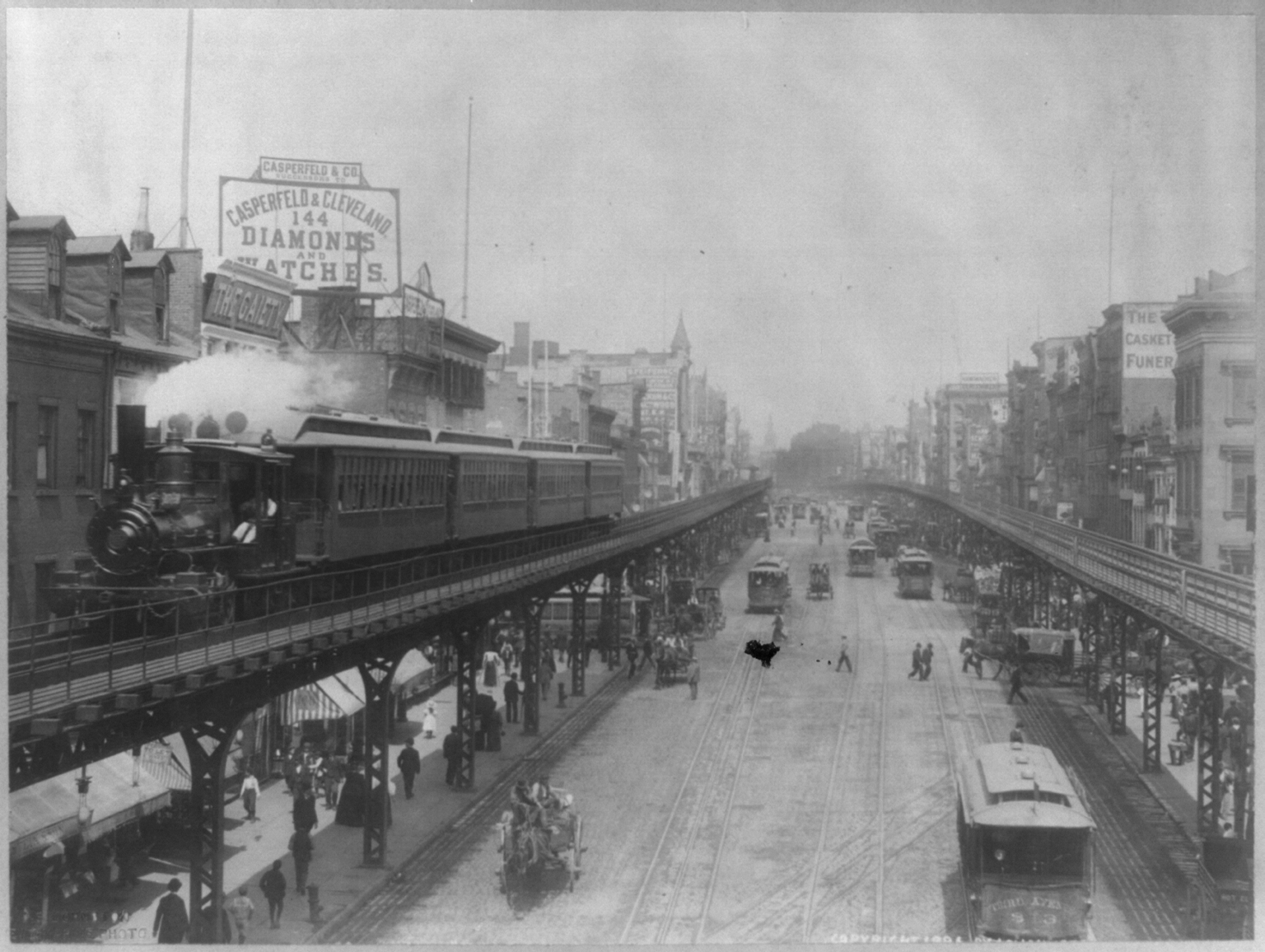The famous (and infamous) New York City neighborhood known as the Bowery has rustic roots, it’s name a derivation of the Dutch term “bouwerie,” which means “farm.” But it has historically been a raffish area that more often resembled a funny farm. The above classic photograph shows the Bowery in 1896. The quartet of articles below from the Brooklyn Daily Eagle provides a look at the colorful characters who inhabited the area around that time.
••••••••••
“Dropped Dead in a Dive” (November 15, 1890): “‘A number of woman frequenters of the lower end of the Bowery in New York sat around a table in the back room of the saloon at 20 Bowery, corner of Pell street, shortly before 1 o’clock this morning drinking beer. Suddenly one of the party grew deathly pale, fell back in her chair and grasped for breath. Before anything could be done for her she was dead. She had met death amid surroundings to which she had been accustomed for years. The death of the woman caused much excitement about the place.
The dead woman was Annie A. Heffernan. She was 29 years old. She had frequented the lower end of Elizabeth street and the Bowery for several years, and was a habitue of the dives and low resorts in that part of the city. Among her class she was, perhaps, more highly thought of than any of her kind. That was because she was the mistress of John, alias Kid, McManus, the burglar who is now serving a term of imprisonment in the Connecticut state prison. Annie was an English girl and came here when she was still quite young. She drifted into bad ways at an early age, and several years ago she fell in with ‘Kid’ McManus. Annie might have been a good looking girl in her younger days, but traces of any former beauty had long since disappeared.”
••••••••••
“Robbed and Imprisoned” (June 14, 1890): “Rafalo Calisondi, a Bowery, New York, boot black, snatched 50 cents from Georgia Carcuo, a young woman from Dover Plains, N.Y., while going through the Bowery last night. In the Tombs Police Court to-day Justice McMahon held him for trial on $100 bail. The young woman was sent to the House of Detention.”
••••••••••
“Robbed of Five Cents” (July 16, 1896): “Emery M. Rogers of 45 Bowery, New York, was seized violently by the throat shortly after midnight this morning at Bowery and Bayard street by William C. Lyons, the lightweight boxer. The men struggled desperately for some time and in the struggle Rogers was knocked down. He then alleges that Lyons placed his hand in his pocket, and stole 5 cents, all the money he had. Lyons was arrested. The charge made against him in the police station was highway robbery. Magistrate Kudlich refused to accept that complaint and ordered one of disorderly conduct to be taken. On the latter charge a fine of $5 was imposed. Lyons smiled at the light sentence imposed.”
••••••••••
“Stabbed in the Stomach” (January 16, 1897): “Two men and a woman were seen quarreling in front of 83 Bowery, New York, early this morning, and the woman and one of the men were arrested. The other one made his escape. At the station house the man gave his name as Charles Brown. He refused to tell where he lived and said he was a sailor. the woman is a well known character. Her name is Carrie Tammany. It was discovered that blood was dripping from the tips of the fingers of the sailor’s right hand, and on the investigation it was found that he had a severe stab wound on his arm. Further inspection revealed a terrible stab wound in his stomach. He was taken to Gouverneur Hospital.
It is believed that the man who made his escape did the stabbing. Neither of the prisoners would tell anything about the affair. The woman was locked up on a charge of disorderly conduct.”
••••••••••
Bowery dancers Kid Foley and Sailor Lil do a “Tough Dance” in 1902:

